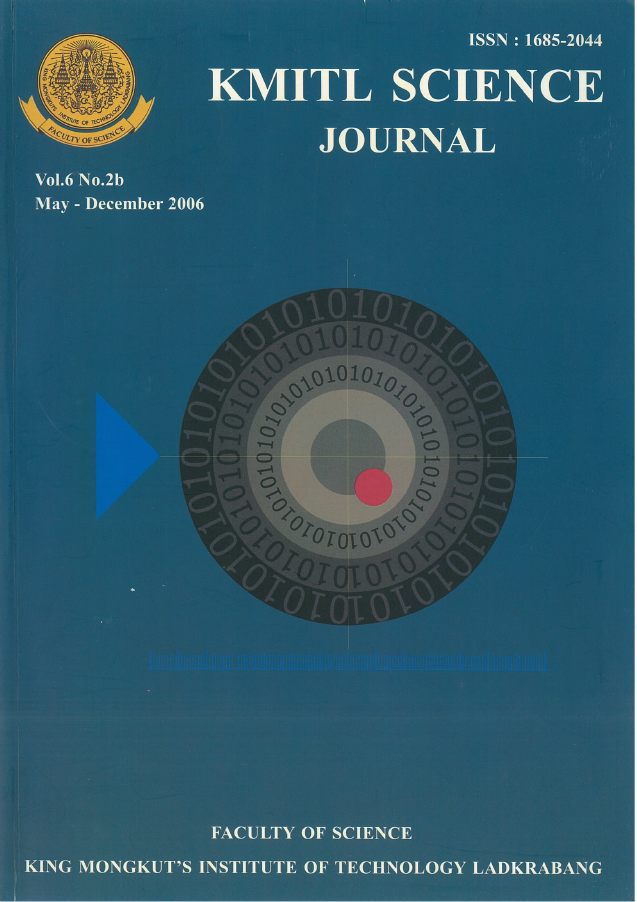HPLC Characterization Method of A Chemosensing Ensemble for Histidine
Main Article Content
Abstract
Chemosensing ensemble, a fertile area, is elucidating the nature and dynamics of small molecules, such as amino acids, binding to DNA. In particular, the design of site conformation-specific probes, selective cleaving agents for mapping and fingerprinting, and the potential in drug design drive this work. Traditionally, work has focused on small interactive binders with extended π system heterocycles having high imidazolate and sometimes carboxylate affinity. A major difficulty of this chemosensor design has been the lack of a clear understanding of the receptor-guest interactions that play a critical role in performance when these are characterized by HPLC method. Covalent systems provide means of attaching amino acids that bind tightly enough to the metal complex-receptors. In this work, the two Cu11 centers of the dimetalic complex of the bis-p-xylylBISDIEN was synthesized as a designed receptor for the recognition of histidine. This provides selective recognition of the ambidentate imidazole residue of histidine prepositioned at the right dictance within BISDIEN ligand. The characterization method reported in this paper is simple in its preparatory and determinative stages. While significant fluorescence quenching observed from the molecule upon binding with two Cu11 to the imidazole residue of histidine caused a very low fluorescence emission detected from HPLC characterization, a high specific of nonfluorescent products were observed by the optimized chromatographic gradient elution coupled with a UV-DAD detector measured at 338 nm and an Hypersil ODS column were utilized for analysis. It has been demonstrated that the peak areas were proportional to the concentrations of our receptor, [L·6HBr-Cu211], after the optimum gradient conditions were performed. Linearity of the calibration curve was also very good (r2 = 0.984). Minimum concentrations of histidine detection at 0.5 mM of reduced and nonreduced receptors were 1µM and 0.5 µM, respectively with the specific retention time 1.93 min.
Keywords: HPLC method, Chemosensing ensemble, Histidine, Transition metal complex, Imidazole group.
Corresponding author: E-mail: star_shown@hotmail.com
Article Details
Copyright Transfer Statement
The copyright of this article is transferred to Current Applied Science and Technology journal with effect if and when the article is accepted for publication. The copyright transfer covers the exclusive right to reproduce and distribute the article, including reprints, translations, photographic reproductions, electronic form (offline, online) or any other reproductions of similar nature.
The author warrants that this contribution is original and that he/she has full power to make this grant. The author signs for and accepts responsibility for releasing this material on behalf of any and all co-authors.
Here is the link for download: Copyright transfer form.pdf
References
[2] Huagland, R. P., 1992-1994. Handbook of Fluorescent Probes and Research Chemicals; Molecular Probes. 3rd Edition,. Eugene, OR.
[3] Hortala, M. A., Fabbrizzi, L., Marcotte, N., Stomeo, F. and Taglietti, A., 2003. Designing the Selectivity of the Fluorescent Detection of Amino Acids: A Chemosensing Ensemble for Histine, Journal of American Chemical Society, 125 (1), 20-21.
[4] Zheng, Y., Huo, Q., Kele, P., Andreopoulos, F.M., Pharm, S.M. and Leblanc, R.M., 2001. A New Fluorescent Chemosensor for Copper Ions Based on Tripeptide Glycyl-Histidyl- Lysine (GHK), Organic Letters, 3(21), 3277-3280
[5] Fabbrizzi, L., Francese, G., Licchelli, M., Perotti, A. and Taglietti, A., 1997. Fluorescent Sensor of Imidazole and Histidine, Chemical Communication, 581-582.
[6] Antoine, F.R., Wei, C. I., Littell, R. C. and Marshall, M. R., 1999. HPLC Method for Analysis of Free Amino Acids in Fish Using O-phthaldialdehyde Precolumn Derivatiza-tion, Journal of Agriculture and Food Chemistry, 47 (12), 5100-5107.
[7] Schuster, R., 1988. Determination of Amino Acids in Biological, Pharmaceutical, Plant and Food Samples by Automated Precolumn Derivatization and High-Performance Liquid Chromatography, Journal of Chromatography, 431, 271-284.
[8] Zhu, H. L., Hang, Q.W., Zhao, J., Duan, C.Y. and Tang, W.X., 1999. The Syntheses, Crystal Structure and Magnetic Behavior of µ-Imidazolato-Discopper (II) Complexes with the Dinucleating Hexaazamacrocycles, Transition Metal Chemistry, 24, 131-134.
[9] Panpae, K., Rattanachaisit, P., Songninluck, J. and Teeravorn, P., 2005. Synthesis and Designing the Fluorescent Detection of Chemosensing Ensemble for Histidine. Proceedings 11th Asian Chemical Congress For the Quantum Leap of Asian Chemistry, Seoul, Korea, pp. 359-360.
[10] Menif, R. and Martell, A.E., 1989. Oxygen Insertion by a New Tyrosinase Model Binuclear Cu11 Macrocyclic Complex, Journal of Chemical Society, Chemical Communi-cation, 1521-1523.
[11] www.http://www.fluorescent%20Biosensors.htm.
[12] Berry, D.E., Girand, S. and McAuley, A., 1996. The Synthesis and Reactions of Nickel (III) Stabilized by a Nitrogen-Donor Macrocycle, Journal of Chemical Education, 73 (6), 551-554.
[13] Streitwieser, A., Jr., Ziegler, G.R., Mowery, P.C., Lewis, A and Lawler, R.G., 1968. Some Generalizations Concerning the Reactivity of Aryl Positions Adjacent to Fused Strained Ring, Journal of American Chemical Society, 9


